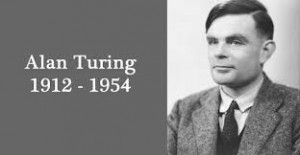Brains, Monkeys and Avatars (Part 3)
By Asher Crispe: March 19, 2014: Category Networks of Meaning
In my experience, when you bring up the idea of reincarnation in casual conversation (a great ice breaker!) most people tend to picture a soul migrating from its past life and old body to its newly formed home in a new body. While this definitely qualifies, it is only an example on a mezzo scale. Other possibilities also exist.
 Sometimes, we read in Kabbalah how the entire generation of the flood, in the times of Noach (Noah), reemerged as the generation of the Tower of Babel only to be brought back once more as the Hebrew slaves in Egypt. Perhaps this can shed light on why many have told me that they wonder if they are reincarnations of people from the Holocaust. The idea, likely or not, has certainly made an impact on those who think this way.
Sometimes, we read in Kabbalah how the entire generation of the flood, in the times of Noach (Noah), reemerged as the generation of the Tower of Babel only to be brought back once more as the Hebrew slaves in Egypt. Perhaps this can shed light on why many have told me that they wonder if they are reincarnations of people from the Holocaust. The idea, likely or not, has certainly made an impact on those who think this way.
If we continue to expand in the direction of the macro scale, then the idea of many-worlds—or what is sometimes called multiverse theory in quantum physics and cosmology—also qualifies as a reincarnation of sorts, albeit on an abstract level. Zoharic literature gives some support to this contention in that, from a certain perspective, God can be said to have created an infinite number of universes (olamot ein-sof). Every universe has its ‘world-soul’ and the physical dimensions are its corresponding body.
Zooming into the micro scale, we can detect much of the same thing. Our body is ultimately made up of organs which can be thought of as mini-bodies. As organ transplants are starting to give way to organ regeneration, whereby a person may have over twenty different body parts grown in a laboratory from the patient’s own stem cells, we might describe this as a re-embodiment of those parts. And what about the 50-100 trillion cells, the corpuscles that constitute the complex society of that lives within each of us?
As you are reading this article, your cells are busily working away so that a parent cell divides into daughter cells. Consequently you are not materially the same person from moment to moment. What accounts for the persistence of our identity is the pattern of information (the study of which consists of the exploding field of bioinformatics and includes genetics and proteomics, etc.) which can be thought of as the ‘soul’ aspect of ourselves which, when copied onto an new material substrate, undergoes its own type of reincarnation. Cells are bodies while DNA as information (not the physical molecules that store it) can be related to the relative soul.
From all this we can surmise that epicycles of reincarnation exist alongside regular life cycles which themselves are subsets of even grander cosmic cycles, each with its own unique repackaging of information/soul in a new corporation. Once we become adept at recognizing all of these re-embodiments across a wide variety of scales, we have to ponder the ramifications of the resurrection of an old body. The challenge is not merely to control the avatar body remotely but to enter into it, to inhabit it. And just as cell division should ideally preserve my new cell body to be identical with my old cell body (in practice information entropy introduces a bit of chaos into the system which drives evolutions and mutations that create differences), so too a resurrected body should resemble the original body. The replacement should maintain the semblance of the original enough to be identified with it (although Torah sources maintain that the body will eventually come back in a perfected state, free of disease, aging and death).
Sometimes, traditional scholarship contrasts Purim where Haman wanted to kill all of the Jewish people physically with that of Chanukah whereas the Greeks primarily wanted to defile the spirit of Israel–effectively enacting a death of the ‘soul’ via the assimilation into Hellenistic culture and attitudes. In light of this distinction, parallels are drawn between the redemption of Chanukah and the messianic era, while Purim is relates to the future resurrection of the dead. It is therefore understandable that one of the places in Talmudic thought where we can explore the question of resurrection/reincarnation originates in a bizarre story about two rabbis on the festival of Purim.
In the Talmud (Tractate Megillah [which itself deals with the story of Purim] 7b), we learn how Rabbah and Rabbi Zeira were having a Purim feast together where they were drinking to the extent that they both became completely intoxicated. Then, the unthinkable occurs: Rabbah stands up and slays Rabbi Zeira. Even more remarkable, the Talmud continues to explain that Rabbah prays for mercy for Rabbi Zeria and miraculously brings him back to life. Then, in what seems to be the punchline in a black comedy, we are informed that Rabbah invites Rabbi Zeira to join him in the Purim feast the following year to which Rabbi Zeira responds that “not every time does a miracle occur.”
While everything about this story belongs to the theater of the absurd, the rabbinical exegesis on this story general strives to read it non-literally. The focus of this interpretive strategy rests on the word shechatei which refers to kosher shechitah or ritual slaughtering. However, the mystical significance of shechitah can be performed on oneself in that it represents the disconnecting of the soul from the body. This same term could therefore imply that Rabbah was assisting Rabbi Zeira in having an out-of-body experience.
Chassidic philosophy delves into this line of thought (see Likkutei Sichot vol. 31 pp.177-190 of the Lubavitcher Rebbe, Rabbi Menachem Mendel Schneersohn) by decoding the allusions in the names of these two rabbis. Rabbah means ‘great’ and is an indication that he achieved mochin d’gadlut or ‘expansive consciousness’ whereby one can transcend the limits of one’s positionality (the fact that we normally view reality from a situated perspective that is seated in the body). In comparison, Rabbi Zeira was true to his name which may be associated with ‘smallness’ (a variant spelling of Zeira means ‘small’ in Aramaic, the language of the Talmud). Rabbi Zeira had only reached the level of perception which is mystically identified as mochin d’katanut of constricted consciousness that cannot escape from disclosed horizons of a single corporeal frame of reference. Immanent to his body, Rabbi Zeira is enclosed with its locality.
The intoxication that occurred at this Purim festival was actually Rabbah attempting to teach Rabbi Zeira the profound esoteric meaning of resurrection as reincarnation/re-embodiment. This explains why it took place contextually on Purim. As far as the slaughtering was concerned, it figuratively represents the elevation of Rabbi Zeira from his comparatively provincial spiritual outlook to a transcendental state of awareness. He was able to take leave of himself in the form which he was familiar and then, once separated, return to himself. He was then both old and new at the same time. Because this was beyond the ordinary sense of one soul in one body, it is branded a miracle in the sense of being super-natural or beyond nature–especially beyond Rabbi Zeira’s nature.
 Further support can be found in another Talmudic passage (Sanhedrin 65b) which also involves Rabbah and Rabbi Zeira. Here it states that “Rabbah created a man (Rabbah bara gavra)” which a was golem-robot of sorts. He then sends it to Rabbi Zeira who was sufficiently convinced by its human form that he had to ask it questions in order to figure out that it was in fact an android and not an actual person. Perhaps this is an ancient world equivalent to the famous Turning test formulated in 1950 by Alan Turning, in his often cited paper “Computing Machinery and Intelligence” which strove to define a methodology for evaluating the success of a machine to behave in a manner which is indistinguishable from a human. Could the average interviewer be misled into thinking that this was a real person based on a list of probing questions? This has long been a goal of advanced AI (Artificial Intelligence) research and engineering.
Further support can be found in another Talmudic passage (Sanhedrin 65b) which also involves Rabbah and Rabbi Zeira. Here it states that “Rabbah created a man (Rabbah bara gavra)” which a was golem-robot of sorts. He then sends it to Rabbi Zeira who was sufficiently convinced by its human form that he had to ask it questions in order to figure out that it was in fact an android and not an actual person. Perhaps this is an ancient world equivalent to the famous Turning test formulated in 1950 by Alan Turning, in his often cited paper “Computing Machinery and Intelligence” which strove to define a methodology for evaluating the success of a machine to behave in a manner which is indistinguishable from a human. Could the average interviewer be misled into thinking that this was a real person based on a list of probing questions? This has long been a goal of advanced AI (Artificial Intelligence) research and engineering.
From here we learn that Rabbah was gifted in knowing the secrets of artificial avatar and robot bodies and he was attempting to impart this knowledge to his friend and colleague. Rabbi Zeira in turn examines it and, upon determining its true nature, dismantles it (he literally returns it to dust–perhaps a swarm of nanobots that were arranged into a sophisticated modular robotics assemblage!).
The essential lesson in all of this is for us to learn to see ourselves outside of ourselves or, to put it differently, to recognize the same person or soul in different bodies. Both of them are ‘me.’ I am able to come back to myself in a new body armed with the secret of transient materiality coupled with the spirit of information that is relatively transcendent to time and which carries me though successive instantiations.
From the fashioning of new physical bodies which extend our definitions of life, we will move on to the creation of new bodies of knowledge in Part Four.
http://www.interinclusion.org/inspirations/brains-monkeys-and-avatars-part-4/
http://www.interinclusion.org/inspirations/brains-monkeys-and-avatars-part-2/














;)
;)
;)
;)
;)
;)
;)
;)
;)
;)
